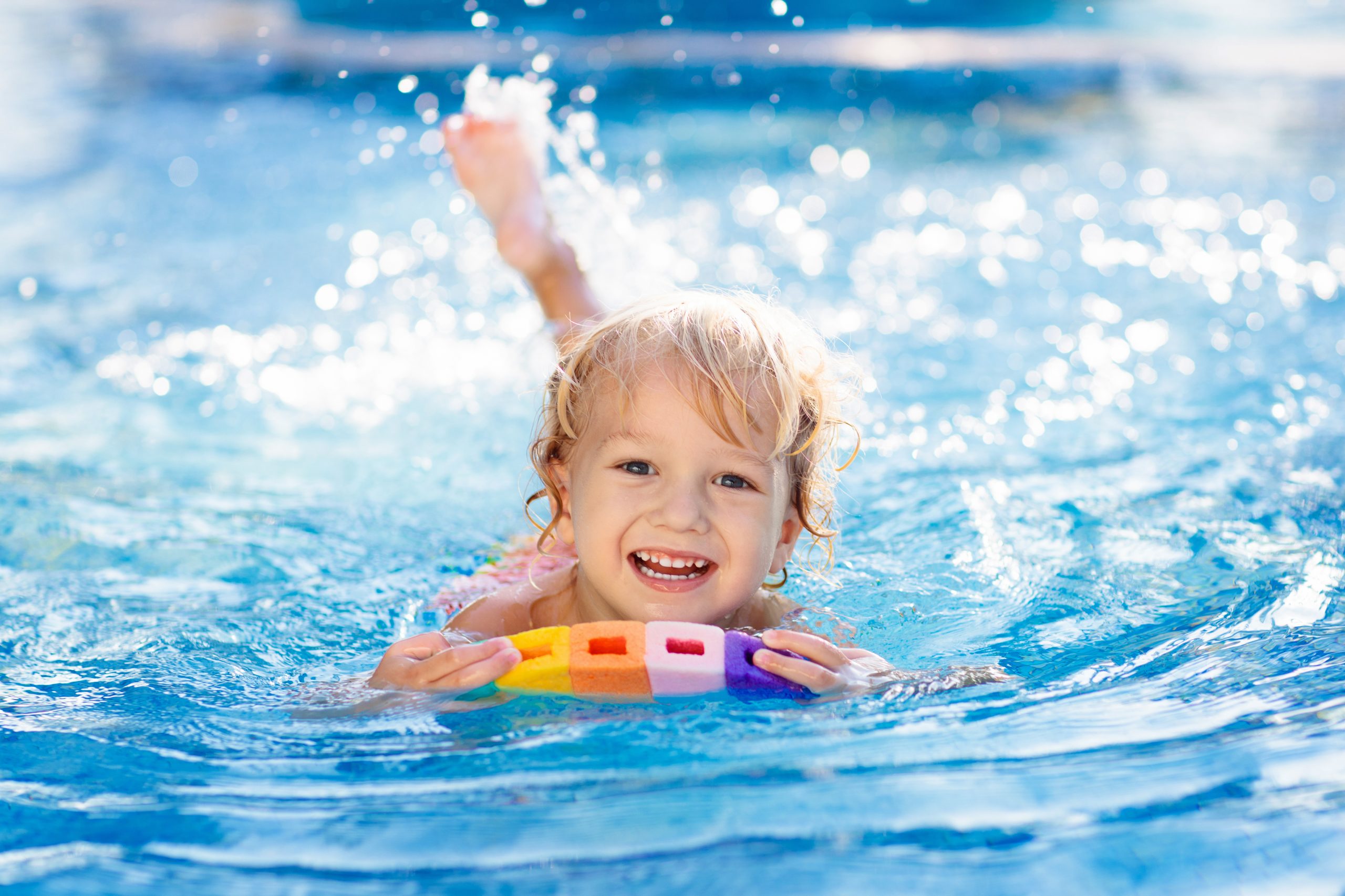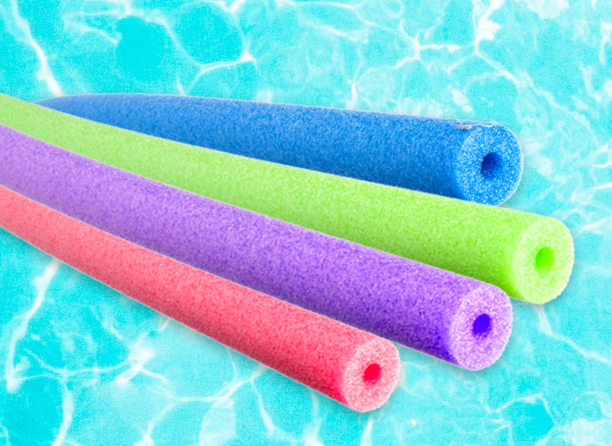
Floaties: yes or no?
There is no debate the #1 reason parents enrol their children in swimming lessons is to enhance their child’s safety in and around the water. However, before, during and even upon completion of the learn-to-swim process, parents may consider having their child use a flotation aid as means to provide added security against their child accidentally drowning. These include armbands, backpacks, vests and noodles.
In our role as aquatic educators, we have a good understanding of the benefits and drawbacks of each type of flotation device from the perspectives of both learning-to-swim and safety. Let us share it with you!
Flotation Aids Are Not a Life-saving Device
First and foremost, it is important that parents understand that flotation aids are not a life-saving device, and that they are not an excuse for the absence of constant supervision while the child is in the water. Unfortunately, accidental drowning is still the leading cause of death among toddlers and the second cause for children aged 0 – 14. Most of these tragedies occur as a result of the child falling accidentally into a body of water. The use of wearable-type flotation aids offers no guarantee as they can pop or deflate, while your child relies on them to keep their head above the water. These type of flotation aids create a misplaced sense of confidence in and around the water, in both the parent and the child.
Flotation Aids limit your child’s ability to learn how to swim
Floaties such as arm bands tend to place swimmers in an upright, vertical position which not only encourages a bicycle kick, but also discourages the child from submerging or placing their face in the water. Furthermore, they limit body rotation and impede arm movement. For a child (or human being) to float and swim without aid, a horizontal position is crucial. The ability to float, in a pool, in a lake, the ocean, can save your life. We can easily tell if a new swimmer has been reliant on inflatable armbands or other ‘upright’ floating devices. They are great at treading water but are uncomfortable with or not used to putting their face in the water or move into that life-saving floating position. They often have to re-learn to feel comfortable and confident in the water again, delaying their swimming progress.
Some parents use layered foam backpacks or flotation vests, which allow arm rotation, to assist the child to maintain the correct horizontal body position and to provide support as the child seeks to learn independent breathing. The layers of foam on the backpack or vest can be removed as the swimmer is seen to require less assistance, which provides for an interesting, gradual learning process. The dangers of these flotation aids however, are that too many layers of foam can force the child’s head into the water and inhibit the child’s ability to breathe. Insufficient layers will not allow the child the support required to hold their head out of the water to draw a breath.

Guided Use of Flotation Aids
A balanced approach to the use of a flotation aid helps prevent the child from becoming dependent on the aid, and helps increase their chance of being able to return to safety without a reliance on the aid.
The parent should allocate time with their child for practising a routine in which they let the child reach for the flotation device before removing it from them. This kind of play allows the child to test their ability to manoeuvre themselves in the water and teaches them their limitations without the aid.
Noodle Flotation Aids
The flotation aids of the noodle type are used regularly at swim schools in a variety of learn to swim activities and strokes. They are often placed either under the waist/hips or around lower back to assist body position, or under the armpits to provide support for the upper body of the child.
As noodles are not a wearable-type of flotation aid, swimmers are liable to slip from these aids without warning. Buoyancy in terms of the use of a noodle can be modified by reducing its length, and when using noodles as a flotation aid swimmers should be encouraged to kick towards the surface of the water and to place their face in the water, and to maintain a horizontal body positi

Flotation Aids Should be Discarded as the Child Progresses and Their Skills are Fine-tuned
All flotation aids should either be taken off (in case of a vest) or removed from the pool area after use to discourage the child from re-entering the pool.
When using a flotation aid, parents need to be aware of external influences such as waves, currents and other swimmers which, depending on the situation, may affect the operation of the aid and the safety of the child.
Notwithstanding the utmost importance of ensuring a child is constantly supervised in the water irrespective of whether or not they are using a flotation aid, the correct and moderate use of a flotation aid can assist with a child’s aquatic development.
FunKey Swim provides formal swimming lessons on the South Side of Brisbane. Contact us to book lessons or make an enquiry..


Recent Comments